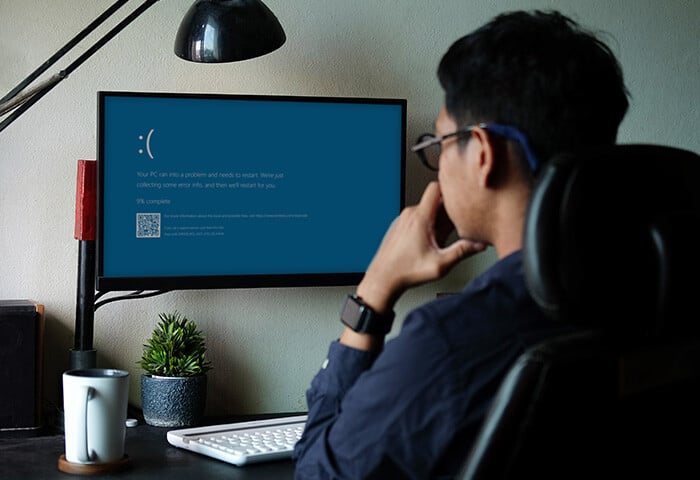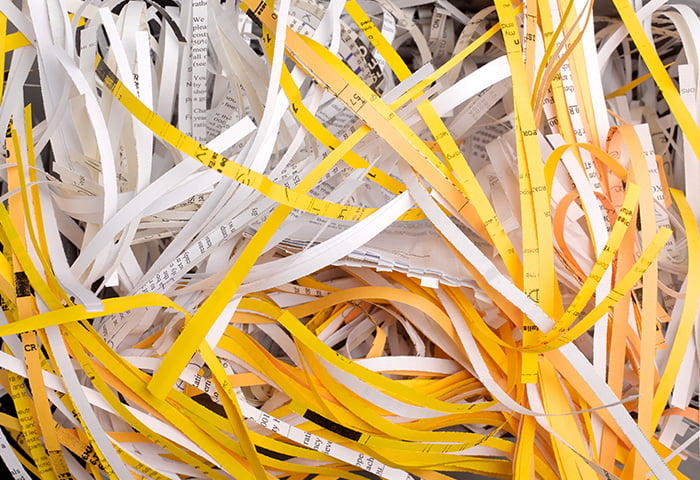Defragmenting a Mac or MacBook: step by step
Before defragging your Mac, first confirm it has a hard disk drive (HDD). Modern Macs and MacBooks have solid state drives (SSDs) and should not be defragged. The earliest Mac computer to come with an SSD was released in 2008.
To check whether your Mac has an HDD or SSD:
-
Click the Apple menu > About This Mac > More Info.
-
In the General section, scroll down and click System Report.
-
Click Storage on the left and look for Medium Type in the Data list.

If you see HDD or Rotational next to Medium Type, then you can technically defrag your Mac. But even most HDDs don’t need to be manually defragged anymore. If you have an SSD, you shouldn’t defrag it.
Older Macs don’t have a System Report, so if the instructions above didn’t work for you, try this:
-
Click the Apple menu > About This Mac > More Info.
-
In the left panel under Hardware, click Serial-ATA or Storage.
Look next to Rotational Rate — if it shows a number like 5400 or 7200 RPM, you have an HDD. If it says Solid State, it’s an SSD.
If you don’t need to defrag, but your Mac is running slow, there are other ways to speed it up. But if you’ve confirmed you have an HDD and it needs defragging, follow the steps below:
Back up your data
Defragging or running disk repairs on a Mac with an HDD can, in rare cases, trigger data corruption or drive failure. Backups protect your files if something goes wrong and are always recommended before running intensive disk operations.
Here’s how to back up data on your Mac using Time Machine:
-
Connect an external hard drive via USB, Thunderbolt, or FireWire.
-
Click the Apple menu in the top-left corner of your Mac.
-
Select System Preferences (sometimes called System Settings).
-
Click Time Machine, then Select Backup Disk.
-
Choose your external drive from the list and click Use Disk.
-
If prompted, choose whether to encrypt your backup (recommended).
-
Time Machine will begin backing up automatically.
-
Wait until the backup completes before defragging your Mac.
Choose trusted defrag software
It can be tricky to find compatible software for older Macs, but Drive Genius and TechTool Pro are some popular choices for defragging a Mac or MacBook’s HDD. When choosing third-party software, make sure you select a well-reviewed and actively maintained program to ensure security and reliability.
Install and run defrag software
Now that you’ve chosen your preferred defrag software, install and run it.
-
Download and Install the software.
-
Run the defrag process. This process can take several hours, so plan a time when you don’t need to use your computer.
-
Restart your Mac once the process is complete. This helps apply any system-level changes and ensures the drive remounts cleanly.
What does defragging a Mac do?
Disk defragmentation is the process of reorganizing scattered data on your hard drive to boost your Mac’s speed, reduce loading times, and improve overall system performance. Data reorganization becomes necessary from time to time because hard disk drives don’t store files in just one place. Instead, they “fragment” data, storing pieces of data in different places.
When you defragment your hard drive, you group related bits of information together. This reduces the time your drive needs to access files. It also fills in empty spaces between saved files, freeing up storage space.

Do I need to defrag my Mac’s hard drive?
In most cases, the answer is no — especially if you're using a newer Mac. You should never defrag a Mac, or any device, with an SSD. But if you're running an older machine with a traditional hard disk drive (HDD), there are a few scenarios where defragmentation can help.
You might benefit from defragging if:
-
You're running low on storage space and file organization has become inefficient.
-
Your hard drive is noticeably slow when opening files or launching programs.
-
Your computer takes a long time to start up, even after restarting your Mac or clearing cache.
-
Your system keeps freezing or lagging, particularly when handling tasks involving large files.
-
You’ve run Disk Utility or another diagnostic and found disk errors or signs of fragmentation.
-
Your disk is more than 10% fragmented.
But even if you have an older Mac with an HDD, you probably don’t need to defrag it. Since Mac OS X 10.2 Jaguar, macOS includes automatic file defragmentation. It uses a process called Hot File Adaptive Clustering to keep frequently used files neatly organized for faster access. For most users, this means manual defragmentation is obsolete.
As mentioned above, you should never defrag a Mac with an SSD. Defragmentation won’t make it faster because SSDs access data differently than HDDs. Moreover, it wastes valuable write cycles, shortening the SSD’s lifespan. Even worse, defragging an SSD can lead to drive failure.
Check for errors on an HDD
Before you consider defragmenting your Mac, it's wise to check if the hard drive has any errors and repair them. Issues like faulty sectors or corrupted file structures can slow down your system or lead to data loss, especially on older HDDs. Mac’s built-in tool, Disk Utility, allows you to scan and repair basic disk issues. Here’s how:
-
Open Finder, then choose Applications.
-
Expand the Utilities folder and launch Disk Utility.
-
Select your internal hard drive (often named “Macintosh HD”).
-
Click and run First Aid, Verify Disk, or Repair Disk (depending on your OS version).
-
Wait for the scan to complete, then review the report and follow any on-screen instructions.
Alternative ways to speed up your Mac
If your Mac is running slowly, and has an SSD instead of an HDD, you don't need to defrag it. In fact, defragmenting an SSD won’t help and could shorten its lifespan. Fortunately, there are several effective ways to boost performance.
Try a Mac cleaning tool
There are many Mac cleaning tools available for macOS, but we think you’ll love AVG TuneUp. It will help find and delete bad photos, clean your browsers automatically, clear hidden junk from your Mac, and find and remove duplicate or old files. All this from a brand you can trust — just check out our Trustpilot ratings and reviews.

When you clean up your Mac using AVG TuneUp, it takes the hassle out of sorting through files hidden within folders and possibly thousands of photos. If your Mac’s loaded with data, this tool could save you hours, or even hundreds of hours sorting through files individually. But if you don’t have much stored on your Mac, you can always comb through your files manually.
Manually remove unneeded files
If your Mac is slowing down, one of the most effective ways to recover space is by clearing out large or outdated files — especially photos, music, and backups. Here’s how to do it step by step:
Delete photos
-
Open the Photos app on your Mac.
-
Select the photos you want to delete.
-
Press the Delete key, then click the Delete button when it appears.
Delete music
-
Open Finder and press Cmd + F to bring up the search box.
-
Sort by Music in the Kind column.
-
Select and move songs you no longer want to Trash.
Delete backups
-
Go to the Apple menu, then General, and Time Machine.
-
Right-click the backup you want to delete, then choose Delete Backup.
-
If prompted, enter your password to confirm the process.
Empty the Trash
-
Click the Trash icon in your dock.
-
Click Empty at the top, then Empty Trash to permanently delete files.
Update your system
Keeping your macOS up to date is one of the easiest ways to boost system performance and stability. Updates often include speed optimizations, memory management improvements, bug fixes, and even new features. If your Mac is running slow, a pending system update could be part of the problem.
Here’s how to run a system update on your Mac:
-
Click the Apple Menu in the top-left corner and select System Settings.
-
In General, click Software Update.
-
If updates are available, click Upgrade Now and follow the on-screen instructions.

Remove unused apps
Unused apps can hog disk space, slow startup times, and consume background resources even when you're not using them. Removing these apps can free up memory, improve boot times, and reduce clutter.
Here’s how to remove apps on a Mac:
-
Open Finder and go to Applications.
-
Scroll through the list and drag any unwanted apps to the Trash.
-
Empty the Trash to completely remove them from your system.
Free up RAM
Freeing up RAM (Random Access Memory) helps your Mac run more smoothly because it can allocate memory to active apps more efficiently. When your RAM is overloaded, your system slows down, apps lag, your Mac might overheat, and multitasking becomes painful.
Here’s how you can free up RAM on your Mac:
Quit unnecessary processes
-
Open Finder > Applications.
-
Click on Utilities.
-
Select Activity Monitor.
-
Sort by Memory, find heavy apps you’re not using, and click the X button to quit them.

Limit open tabs in web browsers
Every open tab uses up RAM, so it’s a good idea to close any you’re not actively using. To streamline your browsing experience even further, try switching to a lightweight browser or using a tab management extension.
Reduce startup programs
-
Go to System Settings > General > Login Items.
-
Remove unnecessary apps from auto-starting at login.
Clear cache files
-
Open Finder.
-
Click the Go menu at the top, then Go to Folder.
-
Type ~/Library/Caches.
-
Manually delete files from large folders.
Note: Always be cautious not to touch anything you don’t recognize, as you could accidentally remove an important system file that your Mac relies on to function. A safer way to clear cached data is by using a cleanup tool like AVG TuneUp.
Optimize your Mac's performance with AVG
Defragging may be a thing of the past for most, but keeping your Mac clean and tidy is as important as ever. AVG TuneUp makes Mac cleanup simple. With just a few clicks, it clears clutter, removes duplicate files, and frees up storage to boost your Mac’s speed and responsiveness. Let AVG TuneUp handle the heavy lifting and keep your system running like new.









/AVG-How-to-clear-cache-on-your-Mac-Thumb.jpg)





%20and%20how%20to%20remove%20them%20(Signal)/Signal-What-is-a-PUP-Thumb.jpg)
/Signal-The-best-cleaning-software-for-Mac-Thumb.jpg)



